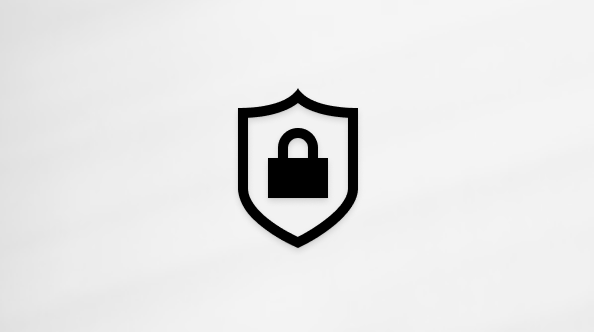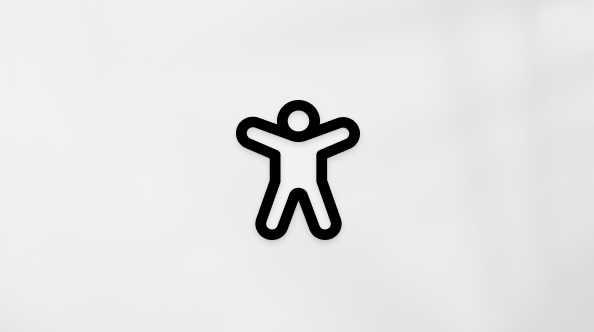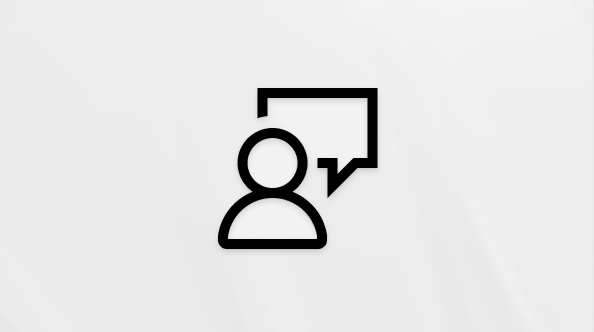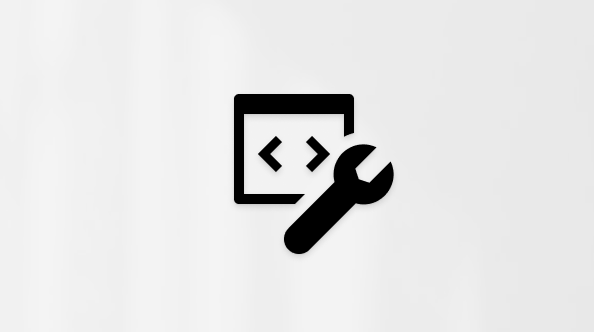Various language and keyboard/input layout settings in Windows can be managed in the Settings app including:
-
Installing and removing languages.
-
Changing the Windows display language.
-
Changing the language used by Microsoft Store apps and websites.
-
Adding and removing keyboard/input layouts.
-
Changing keyboard/input layouts.
This article covers these tasks.
Note: For the sake of simplicity, the rest of this article refers to keyboard/input layout as just keyboard layout.
Select the desired task from the following list:
To check what languages are currently installed in Windows:
-
Right-click on the Start menu and then select Settings > Time & language > Language & region . Or Select the following Time & language > Language & region shortcut:Open Time & language > Language & region
-
In the Time & language > Language & region window, the currently installed languages are displayed in the Language section.
The first step in setting language settings in Windows is making sure that the desired language is installed. To install a language in Windows:
-
Since language packs are downloaded via the Internet, make sure that the Windows device is connected to the Internet.
-
Save all work and close out of any open apps.
-
Right-click on the Start menu and then select Settings > Time & language > Language & region . Or Select the following Time & language > Language & region shortcut:Open Time & language > Language & region
-
In the Time & language > Language & region window, under the Language section, select the Add a language button next to Preferred languages.
-
In the Choose a language to install window, enter in the name of the desired language in the Type a language name... text box or scroll through the list of available languages. Once the desired language is displayed, select it and then select the Next button.
-
In the Install language features window:
-
Under Optional language features, make sure Language pack is selected.
-
Under Optional language features, select any additional desired features, such as speech recognition.
-
Under Language preferences, if the language being installed should be set as the Windows display language, select Set as my Windows display language. For more information, see the Change the Windows display language section in this article.
-
-
Once all the options are selected as desired in the Install language features window, select the Install button.
-
In the Time & language > Language & region window, the following message is displayed under the Language section:Please wait while the language finishes installing. This could take a few minutes. In the list of languages, the download and install progress of the selected language is also displayed.
-
Once the selected language is finished installing, the language is added as a language under the Language section in the Time & language > Language & region window.
-
If the option Set as my Windows display language was selected:
-
The following message is displayed under the Language section in the Time & language > Language & region window prompting to sign out of Windows: Windows needs to sign you out in order to apply your new display language. To sign out of Windows, select the Sign out button next to the message.
Note: If there's no Sign out button next to the message, then manually sign out by right-clicking on the Start menu and then selecting Shutdown or sign out > Sign out.
-
At the Windows sign-on screen, sign back into Windows. The Windows display language is applied and changes the selected display language.
Warning: When the Windows display language is changed, it might also change the keyboard layout to match the language. The input language icon at the sign-on screen shows the currently selected keyboard layout. Be aware of the possible different keyboard layout when entering the username and password at the Windows sign-on screen. If necessary, use the password reveal icon in the password box to verify that the password is being entered correctly with the current keyboard layout. The keyboard layout can be changed from the sign-on screen using the input language icon. Changing the keyboard layout only changes the layout and doesn't change the Windows display language.
-
Note: A single language edition of Windows might be installed if one of the following messages is displayed when trying to add a language pack:Only one language pack allowed.Your Windows license supports only one display language. For more information, see Check whether a version of Windows supports multiple languages.
The Windows display language determines the language used by the Windows user interface. It also determines the language used by Windows features such as the Settings app and File Explorer.
Changing the Windows display language also causes the selected language to move to the top of Preferred languages list. The first supported language in the Preferred languages list determines the language used by Microsoft Store apps and websites.
Important: Some languages aren't fully localized. For languages that aren't fully localized, some elements in Windows might still appear in the first language that is fully localized in the Preferred languages list.
To change the Windows display language:
-
Ensure that Windows already has the desired language installed before switching to it. To check what languages are currently installed in Windows, follow the section Check what languages are installed in Windows in this article. If the desired language isn't currently installed, follow the section Install a language pack in this article.
-
Save all work and close out of any open apps.
-
Right-click on the Start menu and then select Settings > Time & language > Language & region . Or Select the following Time & language > Language & region shortcut:Open Time & language > Language & region
-
In the Time & language > Language & region window, under the Language section, select the desired Windows display language in the drop-down menu next to Windows display language.
Tip: If the desired display language isn't displayed in the Windows display language drop-down menu, see the section Install a language pack in this article to install the language.
-
The following message is displayed under Windows display language: Windows needs to sign you out in order to apply your new display language. To sign out of Windows, select the Sign out button.
Note: If there's no Sign out button next to the message, then manually sign out by right-clicking on the Start menu and then selecting Shutdown or sign out > Sign out.
-
At the Windows sign-on screen, sign back into Windows. The Windows display language is applied and changes to the selected display language.
Warning: When the Windows display language is changed, it might also change the keyboard layout to match the language. The input language icon at the sign-on screen shows the currently selected keyboard layout. Be aware of the possible different keyboard layout when entering the username and password at the Windows sign-on screen. If necessary, use the password reveal icon in the password box to verify that the password is being entered correctly with the current keyboard layout. The keyboard layout can be changed from the sign-on screen using the input language icon. Changing the keyboard layout only changes the layout and doesn't change the Windows display language.
Changing the Windows display language changes the language used by the Windows user interface and Windows features such as the Settings app and File Explorer. By default, it also changes the language used by Microsoft Store apps and websites by moving the selected Windows display language to the top of the Preferred languages list. For more information, see the section Change the Windows display language in this article.
However, the language used by Microsoft Store apps or websites can be controlled independently of the Windows display language. For example, the Windows display language can be in one language, while the language used by Microsoft Store apps or websites can be in another. The first supported language in the Preferred languages list determines the language used by Microsoft Store apps and websites.
To change the language used by Microsoft Store apps and websites:
-
Right-click on the Start menu and then select Settings > Time & language > Language & region . Or Select the following Time & language > Language & region shortcut:Open Time & language > Language & region
-
In the Time & language > Language & region window, the current preferred order of the installed languages is shown under Preferred languages in the Language section.
-
To move the desired language for Microsoft Store apps and websites to the top of the Preferred languages list, select the language and then drag it to the top of the list. Observe how moving the language to the top of the Preferred languages list doesn't affect the language selected as the Windows display language.
-
If desired, reorder the preference of other installed languages by selecting the language and then dragging it to the desired location in the Preferred languages list.
Adding a keyboard layout allows selection of an alternate keyboard layout for the current Windows display language. Alternate keyboard layouts allow directly entering of characters using the keyboard or input device that aren't available in the current Windows display language's keyboard layout. For example, characters only found in other languages.
Note: A full language pack that matches the language of the desired keyboard layout doesn't always need to be installed to gain access to that keyboard layout. All languages, including the current Windows display language, have keyboard layouts in various different languages. The current Windows display language might have the keyboard layout of the desired keyboard layout in a different language.
To add a keyboard layout:
-
Right-click on the Start menu and then select Settings > Time & language > Language & region . Or Select the following Time & language > Language & region shortcut:Open Time & language > Language & region
-
In the Time & language > Language & region window, under the Language section, select the ellipses next to the current Windows display language and then select Language options.
-
In the Time & language > Language & region > Options window, under the Keyboards section, verify that the desired keyboard layout isn't already installed. If it's not, then select the Add a keyboard button next to Installed keyboards.
-
In the pop-up menu that appears, scroll through the list of keyboard layouts and then select the desired keyboard layout. The list is sorted first with the keyboard layouts from the selected language, and then alphabetically.
Important: If the desired keyboard layout isn't listed, start this section over, but instead of the current Windows display language, select the language that matches the desired keyboard layout. If the language that matches the desired keyboard layout isn't installed, then follow the section Install a language pack in this article to install the language of the desired keyboard layout.
-
Once the desired keyboard layout is selected, it should display in the Time & language > Language & region > Options window under the Keyboards section. To switch to the keyboard layout that was installed, see Change the keyboard layout section in this article.
A keyboard layout can be selected from the input language icon in the system tray area of the taskbar. The input language icon displays the currently selected keyboard layout. To select a different keyboard layout:
-
In the system tray area of the taskbar, select the input language icon.
-
A pop-up menu is displayed with the available keyboard layouts. Select the desired keyboard layout.
-
The input language icon changes to the selected keyboard layout.
Tips: A keyboard layout can also be selected by holding down the Windows logo key on the keyboard and then selecting the Spacebar. Each selection of the Spacebar while holding down the Windows logo key cycles through the installed keyboard layouts. If selecting the Spacebar doesn't do anything, only one keyboard layout is installed. To see what languages and keyboard layouts are currently installed in Windows, see the following sections in this article:
If the desired keyboard layout isn't available, follow the section Add a keyboard layout in this article.
To remove a currently installed language pack:
-
Right-click on the Start menu and then select Settings > Time & language > Language & region . Or Select the following Time & language > Language & region shortcut:Open Time & language > Language & region
-
In the Time & language > Language & region window, under the Language section, select the ellipses next to the language that needs to be removed and then select Remove.
Note: If the Remove button is greyed out, the selected language to be removed is the current Windows display language. Switch to another Windows display language before attempting to remove the language. For more information, see Change the Windows display language section in this article.
-
In the dialog box that appears, confirm removing the language by selecting the Yes button.
To remove a currently installed keyboard layout:
-
Right-click on the Start menu and then select Settings > Time & language > Language & region . Or Select the following Time & language > Language & region shortcut:Open Time & language > Language & region
-
In the Time & language > Language & region window, under the Language section, select the ellipses next to the language that contains the keyboard that needs to be removed and then select Language options.
Note: Installed keyboard layouts aren't always part of a matching language. The keyboard layout might be installed as part of the current Windows display language. Languages can contain keyboard layouts that aren't the same language as the language pack. For this reason, the keyboard layout can be located either under the current Windows display language or the language that matches the keyboard layout. If the keyboard layout to be removed isn't under the current Windows display language, then check the language that matches the keyboard layout.
-
In the Time & language > Language & region > Options window, under the Keyboards section, select the ellipses next to the keyboard that needs to be removed and then select Remove.
Note: If the Remove button is greyed out, the selected keyboard layout is the only installed keyboard layout for the current Windows display language. Add another keyboard layout before attempting to remove the keyboard layout. For more information, see Add a keyboard layout section in this article.
The input language icon in the system tray area of the taskbar allows selection of keyboard layouts. By default, the input language icon is enabled and displays in the taskbar. For more information, see the Change the keyboard layout section of this article.
An alternative to the input language icon is the legacy language bar found in previous versions of Windows. If the legacy language bar is enabled, then the input language icon in the taskbar is disabled and no longer displays. To reenable the input language icon and display it in the taskbar, follow these steps:
-
Right-click on the Start menu and then select Settings > Time & language > Typing . Or Select the following Time & language > Typing shortcut:Open Time & language > Typing
-
In the Time & language > Typing window, select Advanced keyboard settings.
-
In the Time & language > Typing > Advanced keyboard settings window, under Switching input methods, uncheck the option Use the desktop language bar when it's available.
Warning: Unchecking the option Use the desktop language bar when it's available causes the input language icon to display again in the taskbar. However, it causes the legacy language bar to no longer display. If the legacy language bar is preferred over the input language icon, then leave the option Use the desktop language bar when it's available enabled. Additional options for the legacy language bar can be found under the Language bar options link in the Time & language > Typing > Advanced keyboard settings window.
To check what languages are currently installed in Windows:
-
Right-click on the Start menu and then select Settings > Time & language > Language . Or Select the following Language shortcut:Open Language
-
In the Language window, the currently installed languages are displayed under Preferred language.
The first step in setting language settings in Windows is making sure that the desired language is installed. To install a language in Windows:
-
Since language packs are downloaded via the Internet, make sure that the Windows device is connected to the Internet.
-
Save all work and close out of any open apps.
-
Right-click on the Start menu and then select Settings > Time & language > Language . Or Select the following Language shortcut:Open Language
-
In the Language window, under Preferred language, select Add a language.
-
In the Choose a language to install window, enter in the name of the desired language in the Type a language name... text box or scroll through the list of available languages. Once the desired language is displayed, select it and then select the Next button.
-
In the Install language features window, under Optional language features:
-
Make sure Install language pack is selected.
-
If the language should also be set as the Windows display language, select Set as my Windows display language. For more information, see the Change the Windows display language section in this article.
-
Select any additional desired features, such as text-to-speech or handwriting.
-
-
Once all the options are selected as desired in the Install language features window, select the Install button.
-
In the Language window, under Preferred languages, the download and install progress of the selected language is displayed.
-
Once the selected language is finished installing, the language is added as a language in the Language window under Preferred languages.
-
If the option Set as my Windows display language was selected:
-
The following message is displayed prompting to sign out of Windows:Setting Windows display languageWindows needs to sign you out in order to fully apply the new language. Continue? To sign out of Windows, select the Yes, sign out now button.
Note: If the prompt to sign out of Windows isn't displayed after the language pack is finished installing, then manually sign out by right-clicking on the Start menu and then selecting Shutdown or sign out > Sign out.
-
At the Windows sign-on screen, sign back into Windows. The Windows display language is applied and changes to the selected Windows display language.
Warning: When the Windows display language is changed, it might also change the keyboard layout to match the language. The input language icon at the sign-on screen shows the currently selected keyboard layout. Be aware of the possible different keyboard layout when entering the username and password at the Windows sign-on screen. If necessary, use the password reveal icon in the password box to verify that the password is being entered correctly with the current keyboard layout. The keyboard layout can be changed from the sign-on screen using the input language icon. Changing the keyboard layout only changes the layout and doesn't change the Windows display language.
-
Note: A single language edition of Windows might be installed if one of the following messages is displayed when trying to add a language pack:Only one language pack allowed.Your Windows license supports only one display language. For more information, see Check whether a version of Windows supports multiple languages.
The Windows display language determines the language used by the Windows user interface. It also determines the language used by Windows features such as the Settings app and File Explorer.
Changing the Windows display language also causes the selected language to move to the top of Preferred languages list. Microsoft Store apps and websites appear in the first supported language in the Preferred languages list.
Important: Some languages aren't fully localized. For languages that aren't fully localized, some elements in Windows might still appear in the first language that is fully localized in the Preferred languages list.
To change the Windows display language:
-
Ensure that Windows already has the desired language installed before switching to it. To check what languages are currently installed in Windows, follow the section Check what languages are installed in Windows in this article. If the desired language isn't currently installed, follow the section Install a language pack in this article.
-
Save all work and close out of any open apps.
-
Right-click on the Start menu and then select Settings > Time & language > Language . Or Select the following Language shortcut:Open Language
-
In the Language window, under Windows display language, select the desired Windows display language from the drop-down menu.
Tip: If the desired Windows display language isn't displayed in the drop-down menu, see the section Install a language pack in this article to install the language.
-
The following message is displayed prompting to sign out of Windows:Setting Windows display languageWindows needs to sign you out in order to fully apply the new language. Continue? To sign out of Windows, select the Yes, sign out now button.
Note: If the prompt to sign out of Windows isn't displayed after selecting the desired Windows display language, then manually sign out by right-clicking on the Start menu and then selecting Shutdown or sign out > Sign out.
-
At the Windows sign-on screen, sign back into Windows. The Windows display language is applied and changes to the selected Windows display language.
Warning: When the Windows display language is changed, it might also change the keyboard layout to match the language. The input language icon at the sign-on screen shows the currently selected keyboard layout. Be aware of the possible different keyboard layout when entering the username and password at the Windows sign-on screen. If necessary, use the password reveal icon in the password box to verify that the password is being entered correctly with the current keyboard layout. The keyboard layout can be changed from the sign-on screen using the input language icon. Changing the keyboard layout only changes the layout and doesn't change the Windows display language.
Changing the Windows display language changes the language used by the Windows user interface and Windows features such as the Settings app and File Explorer. By default, it also changes the language used by Microsoft Store apps and websites by moving the selected Windows display language to the top of the Preferred languages list. For more information, see the section Change the Windows display language in this article.
However, the language used by Microsoft Store apps or websites can be controlled independently of the Windows display language. For example, the Windows display language can be in one language, while the language used by Microsoft Store apps or websites can be in another. The first supported language in the Preferred languages list determines the language used by Microsoft Store apps and websites.
To change the language used by Microsoft Store apps and websites:
-
Right-click on the Start menu and then select Settings > Time & language > Language . Or Select the following Language shortcut:Open Language
-
In the Language window, the current preferred order of the installed languages is shown under Preferred languages.
-
To move the desired language for Microsoft Store apps and websites to the top of the Preferred languages list, select the language and then use the up arrow to move it to the top of the Preferred languages. Observe how moving the language to the top of the Preferred languages list doesn't affect the language selected as the Windows display language.
-
If desired, reorder the preference of other installed languages. To reorder a language, select the language and then using the up arrow and down arrow to set it in the desired order of preference in the Preferred languages list.
Adding a keyboard layout allows selection of an alternate keyboard layout for the current Windows display language. Alternate keyboard layouts allow directly entering of characters using the keyboard or input device that aren't available in the current Windows display language's keyboard layout. For example, characters only found in other languages.
Note: A full language pack that matches the language of the desired keyboard layout doesn't always need to be installed to gain access to that keyboard layout. All languages, including the current Windows display language, have keyboard layouts in various different languages. The current Windows display language might have the keyboard layout of the desired keyboard layout in a different language.
To add a keyboard layout:
-
Right-click on the Start menu and then select Settings > Time & language > Language . Or Select the following Language shortcut:Open Language
-
In the Language window, under Preferred languages, select the current Windows display language and then select the Options button.
-
In the Language Options: <Language> window, under Keyboards, verify that the desired keyboard layout isn't already installed. If it's not, then select Add a keyboard.
-
In the pop-up menu that appears, scroll through the list of keyboard layouts and then select the desired keyboard layout. The list is sorted first with the keyboard layouts from the selected language, and then alphabetically.
Important: If the desired keyboard layout isn't listed, start this section over, but instead of the current Windows display language, select the language that matches the desired keyboard layout. If the language that matches the desired keyboard layout isn't installed, then follow the section Install a language pack in this article to install the language of the desired keyboard layout.
-
Once the desired keyboard is selected, it should display in the Language Options: <Language> window Keyboards. To switch to the keyboard layout that was installed, see Change the keyboard layout section in this article.
A keyboard layout can be selected from the input language icon in the system tray area of the taskbar. The input language icon displays the currently selected keyboard layout. To select a different keyboard layout:
-
In the system tray area of the taskbar, select the input language icon.
-
A pop-up menu is displayed with the available keyboard layouts. Select the desired keyboard layout.
-
The input language icon changes to the selected keyboard layout.
Tips: A keyboard layout can also be selected by holding down the Windows logo key on the keyboard and then selecting the Spacebar. Each selection of the Spacebar while holding down the Windows logo key cycles through the installed keyboard layouts. If selecting the Spacebar doesn't do anything, only one keyboard layout is installed. To see what languages and keyboard layouts are currently installed in Windows, see the following sections in this article:
If the desired keyboard layout isn't available, follow the section Add a keyboard layout in this article to add the keyboard layout.
To remove a currently installed language pack:
-
Right-click on the Start menu and then select Settings > Time & language > Language . Or Select the following Language shortcut:Open Language
-
In the Language window, under Preferred languages, select the language that needs to be removed and then select the Remove button.
Note: If the Remove button is greyed out, the selected language to be removed is the current Windows display language. Switch to another Windows display language before attempting to remove the language. For more information, see Change the Windows display language section in this article.
To remove a currently installed keyboard layout:
-
Right-click on the Start menu and then select Settings > Time & language > Language . Or Select the following Language shortcut:Open Language
-
In the Language window, under Preferred languages, select the language that contains the keyboard layout that needs to be removed and then select the Options button.
Note: Installed keyboard layouts aren't always part of a matching language. The keyboard layout might be installed as part of the current Windows display language. Languages can contain keyboard layouts that aren't the same language as the language pack. For this reason, the keyboard layout can be located either under the current Windows display language or the language that matches the keyboard layout. If the keyboard layout to be removed isn't under the current Windows display language, then check the language that matches the keyboard layout.
-
In the Language Options: <Language> window, under Keyboards, select the keyboard layout to remove and then select the Remove button.
Note: If the Remove button is greyed out, the selected keyboard layout is the only installed keyboard layout for the current Windows display language. Add another keyboard layout before attempting to remove the keyboard layout. For more information, see Add a keyboard layout section in this article.
The input language icon in the system tray area of the taskbar allows selection of keyboard layouts. By default, the input language icon is enabled and displays in the taskbar. For more information, see the Change the keyboard layout section of this article. If the input language icon isn't visible on the taskbar, follow these steps to display it again:
-
Right-click on the Start menu and then select Settings > Personalization > Taskbar . Or Select the following Taskbar shortcut:Open Taskbar
-
In the Taskbar window, under Notification area, select the Turn system icons on or off link.
-
In the Turn system icons on or off window, make sure Input Indicator is switched On.
If switching on Input Indicator doesn't cause the input language icon to display again in the taskbar, then the legacy language bar might be enabled. The legacy language bar found in previous versions of Windows is an alternative to the input language icon in the taskbar for switching between keyboard layouts. If the legacy language bar is enabled, then the input language icon in the taskbar is disabled and no longer displays.
To disable the legacy language bar so that the input language icon is reenabled and displayed in the taskbar, follow these steps:
-
Right-click on the Start menu and then select Settings > Devices > Typing . Or Select the following Typing shortcut:Open Typing
-
In the Typing window, under More keyboard settings, select Advanced keyboard settings.
-
In the Advanced keyboard settings window, under Switching input methods, uncheck the option Use the desktop language bar when it's available.
Warning: Unchecking the option Use the desktop language bar when it's available causes the input language icon to display again in the taskbar. However, it causes the legacy language bar to no longer display. If the legacy language bar is preferred over the input language icon, then leave the option Use the desktop language bar when it's available enabled. Additional options for the legacy language bar can be found under the Language bar options link in the Advanced keyboard settings window.











